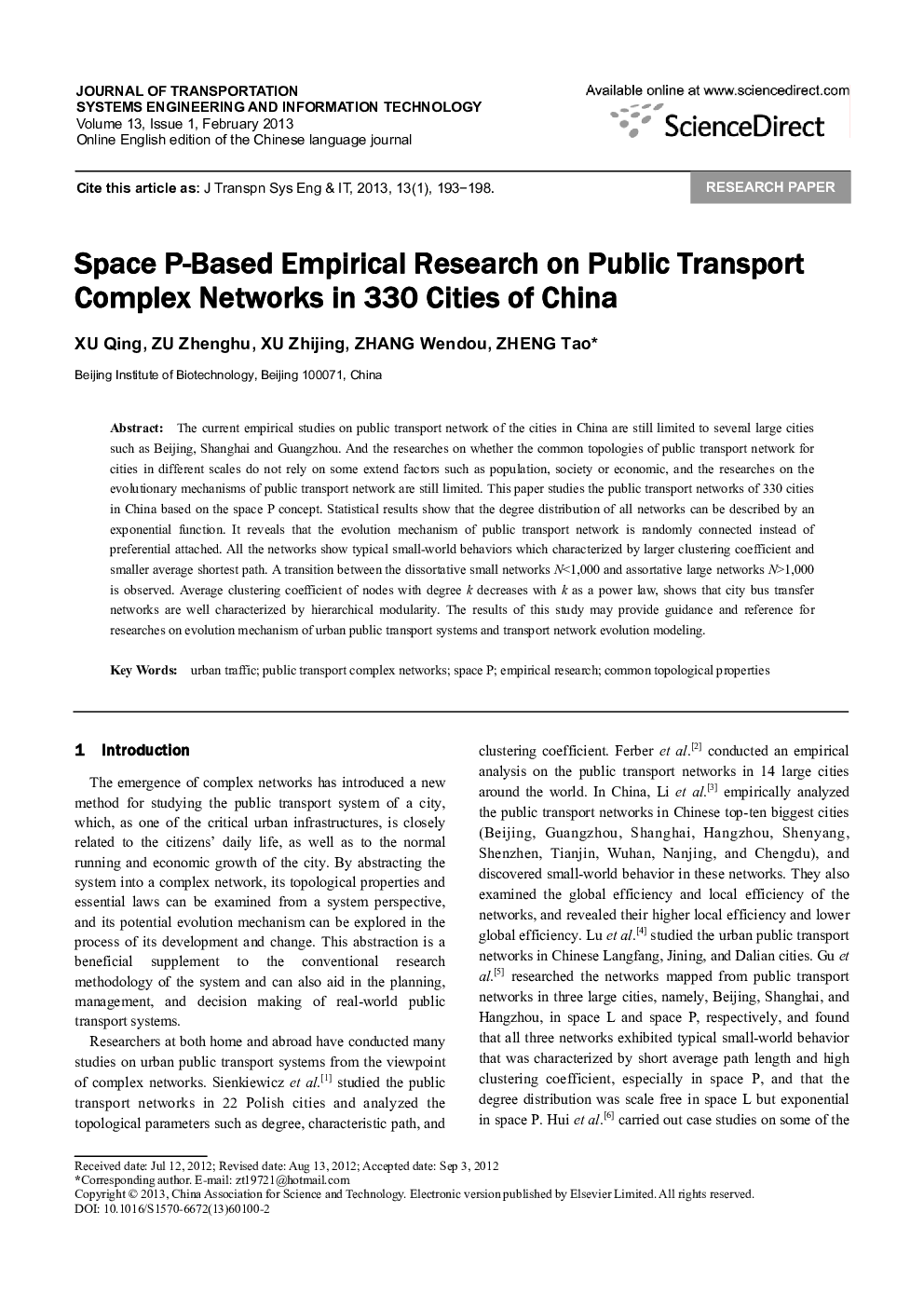| Article ID | Journal | Published Year | Pages | File Type |
|---|---|---|---|---|
| 108464 | Journal of Transportation Systems Engineering and Information Technology | 2013 | 6 Pages |
The current empirical studies on public transport network of the cities in China are still limited to several large cities such as Beijing, Shanghai and Guangzhou. And the researches on whether the common topologies of public transport network for cities in different scales do not rely on some extend factors such as population, society or economic, and the researches on the evolutionary mechanisms of public transport network are still limited. This paper studies the public transport networks of 330 cities in China based on the space P concept. Statistical results show that the degree distribution of all networks can be described by an exponential function. It reveals that the evolution mechanism of public transport network is randomly connected instead of preferential attached. All the networks show typical small-world behaviors which characterized by larger clustering coefficient and smaller average shortest path. A transition between the dissortative small networks N<1,000 and assortative large networks N7gt;1,000 is observed. Average clustering coefficient of nodes with degree k decreases with k as a power law, shows that city bus transfer networks are well characterized by hierarchical modularity. The results of this study may provide guidance and reference for researches on evolution mechanism of urban public transport systems and transport network evolution modeling.
